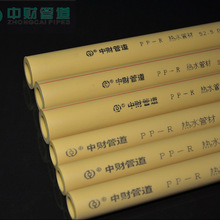Abolishing voter protections because they’ve successfully stopped discrimination, Supreme Court Justice Ruth Bader Ginsburg wrote in 2013, “is like throwing away your umbrella in a rainstorm because you are not getting wet.” Despite Ginsburg’s now-famous warning, her five conservative colleagues took a wrecking ball to a key provision of the Voting Rights Act—but insisted that the damage was limited. The court’s 5–4 decision in Shelby County v. Holdernullified preclearance, a requirement that historically racist states secure approval from the federal government before changing their election laws. Now, the courts are primed to deal another, possibly fatal, blow to the landmark civil rights law.
At the time, Chief Justice John Roberts said that “things have changed dramatically” in the South since the VRA’s passage in 1965, questioning the persistence of racial voter suppression. But the damage from Shelby Countyemerged immediately, and it has spiraled each year since. Jurisdictions previously covered by the now-defunct preclearance provision have closed at least 1,688 polling places and have purged voters at a rate 40 percent higher than that in other jurisdictions. Stringent, discriminatory voter ID laws have cropped up in these states too. It is no overstatement to say that the right to vote is under relentless assault in much of the United States today.
More on Who Counts?
- Block the Vote
- The Case for Abolishing the Citizenship Exam
- This Election Will Decide if America Can Ever Hold Free and Fair Elections
- Meet an NBA Player Voting for the First Time Today
Shelby Countydid not uproot the VRA entirely. The court left in place Section 2, which prohibits any law that has the purpose or effect of abridging racial minorities’ right to vote. Section 2, the majority noted, “is not at issue in this case,” suggesting that it could still be used to protect the franchise.
Now, six years later, Section 2 is in serious trouble. Conservative advocates have long loathed this vital component of the VRA because it forbids any law that has the result of disproportionately burdening minority suffrage. Today, this “results test” is the most powerful and practical tool in the fight against racist voter suppression. Courts have used it in dozens of cases to protect minorities’ right to a free and equal vote. A majority of the current Supreme Court may also believe the results test is unconstitutional. And the nation’s most conservative federal court of appeals may be prepared to wound it, giving SCOTUS a chance to stick a knife into the heart of the VRA.
Advertisement Advertisement Advertisement AdvertisementThe Supreme Court has said that the right to vote is “preservative of all rights.” But it has spent much of the past 150 years either ignoring or facilitating disenfranchisement. The court has undermined the VRA, approved racial and partisan gerrymandering, upheld gratuitous voter ID laws, and greenlighted discriminatory voter purges. It came extremely close to robbing citizens of their ability to address gerrymandering and could still roll back progressive reforms. If the Supreme Court sabotages Section 2, it will only be the latest chapter in the judiciary’s subversion of voting rights.
Race-based prohibitions on the right to vote have, in theory, been illegal since the United States ratified the 15thAmendment in 1870. Passed in the wake of the Civil War, this amendment was intended to enfranchise men of color, outlawing any measure that abridged the right to vote “on account of race.” But the Supreme Court promptly limited Congress’ ability to enforce the 15thAmendment. In 1875, the court struck down a law that allowed the federal government to punish officials who wrongly deny citizens the ballot, alleging that it exceeded Congress’ constitutional authority. Then, in 1903, the court interpreted the 15thAmendment to apply only to intentional race discrimination—which is incredibly difficult to prove, since sponsors of racist legislation do not often admit their goals in public.
Advertisement AdvertisementThe Supreme Court’s voting-related decisions allowed states to continue using devices like poll taxes and literacy tests so long as lawmakers did not acknowledge their obvious purpose: to suppress black votes. These decisions helped ensure that black citizens could not cast a ballot in much of the country for nearly a century after the passage of the 15thAmendment. They perpetuated Jim Crow, locking black voters into a racial caste that they could not vote their way out of.
AdvertisementThus, the Voting Rights Act was necessary, in part, to cure an ill that SCOTUS enabled. Passed in 1965, the VRA forbade any “test or device” deployed as a prerequisite to vote. Section 2 of the law also forbade any “standard, practice, or procedure” that would “deny or abridge” the right to vote on account of race. Sections 4 and 5, meanwhile, put racist states under federal supervision, ordering them to obtain permission from the attorney general or a federal court before altering their election laws. (It was this scheme that the Supreme Court voided in Shelby Countyunder the theory that, in short, racism is over.)
AdvertisementThe VRA ended a dark era of flagrant racism in election law. But initially, it did not eradicate laws that continued to suppress minority participation in elections—because SCOTUS would not let it. The Supreme Court ruled in 1980 that, like the 15th Amendment, Section 2 only outlawed intentional discrimination against minority voters. Disproportionate impact, the court reasoned, did not constitute a VRA violation. Rather, the “ultimate question remains whether a discriminatory intent has been proved.”
Advertisement Advertisement The Voting Rights Act was necessary, in part, to cure an ill that SCOTUS enabled.Congress responded by amending the VRA. It established that Section 2 bars the government from placing a disproportionate burdenon minority voters, regardless of intent. And it clarified that the VRA restricts both vote denial (blocking minorities from the polls) and vote dilution (limiting minorities’ voting strength). These amendments enshrined the results test into law.
AdvertisementOne influential opponent of the results test was a young lawyer at the Department of Justice named John Roberts. As Ari Berman has reported, Roberts wrote about 25 memos opposing the 1982 VRA amendment, arguing that it “would eventually lead to a quota system.” The amended VRA, he asserted, would “establish a ‘right’ ” to proportional representation for racial minorities. “Violations of Section 2 should not be made too easy to prove,” Roberts concluded, “since they provide a basis for the most intrusive interference imaginable by federal courts into state and local processes.”
AdvertisementThe Supreme Court’s conservative justices have echoed Roberts’ skeptical view of the results test. Justice Anthony Kennedy, for instance, wrote in 1994 that if the VRA safeguards minority representation, it would raise “the most serious constitutional questions.” Southern states have historically diluted minority votes by limiting the number of black voters in a single district, preventing them from electing their preferred candidate. To fix this problem, courts have compelled states to create more black-majority districts. Kennedy wrote that this solution could “entrench the very practices and stereotypes the Equal Protection Clause is set against.” He raised this complaint again in 2009, in an opinion joined by Roberts, who had been elevated to chief justice of the United States.
Advertisement AdvertisementThere is another potential constitutional attack on Section 2’s results test. The Supreme Court has ruled that Congress’ enforcement of the 14thAmendment must be “congruent and proportional” to the constitutional violation. In other words, Congress can’t enforce a 14thAmendment right beyond how SCOTUS has defined it. If that rule applies to the 15th Amendment as well, then the results test is dead in the water. After all, the Supreme Court has said the amendment only bars intentional discrimination—so a law that forbids discriminatory results is not “congruent and proportional” to the Constitution.
Many court watchers expected SCOTUS to apply this rule to the 15th Amendment in Shelby County. But the majority sidestepped the question, instead deploying a hazy argument about the equal dignity of states. The “congruent and proportional” rule therefore hangs over the VRA’s results test like a sword of Damocles.
AdvertisementWhat’s more troubling is that even though SCOTUS has applied the results test repeatedly, it has never squarely upheld its constitutionality. And in the aftermath of Shelby County, conservative attorneys and judges have sought to narrow or abolish the test once and for all, smelling blood in the water.
AdvertisementSection 2 was initially used in cases where lawmakers weakened minority representation through redistricting. But after the fall of preclearance, civil rights advocates seized upon its potential to fend off more direct impediments to voting. Its constitutionality came to the fore in 2015 during litigation over Texas’ draconian voter ID law, the strictest in the country, which allowed Texans to vote with a handgun license but not a student ID. The plaintiffs claimed that this law violated Section 2 because it disproportionately burdened Latinos, who are especially likely to lack the required identification. Texas fought back by raising both attacks on the results test: It exceeds Congress’ power to enforce the 15th Amendment, and it violates equal protection by factoring “racial considerations” into election laws. (Texas asserted that the legislature would commit unconstitutional discrimination if it had “to ensure that voters of various races possess photo ID in exactly equal proportion.”)
Advertisement Advertisement AdvertisementA three-judge panel for the 5thU.S. Circuit Court of Appeals rejected these claims in a terse footnote, stating that it was bound by circuit precedent to uphold the results test. The panel struck down the voter ID law, ruling that it had a disparate impact on Latinos. Texas asked the court to hear the case en banc—that is, with every judge sitting—and it agreed. The en banc court struck down the voter ID law in 2016, applying the results test. This time, though, five dissenting judges adopted Texas’ argument that the test is likely unconstitutional. They cited the familiar reasons: It surpasses Congress’ authority to enforce the 15thAmendment and violates equal protection by mandating “considerations of race.” (The Supreme Court declined to hear the case, leaving the en banc decision in place.)
AdvertisementThree years later, the 5thCircuit has changed. Donald Trump has placed five extremists on the court. And the court’s new reactionary majority will soon hear a case that will allow it to kneecap Section 2.
AdvertisementThat case, Thomas v. Bryant, is a typical VRA dispute. It revolves around Mississippi’s Senate District 22, which lies at the heart of the Mississippi Delta. Although the district sits in a historically black region, black Mississippians constitute a bare majority of its voting-age population, and black candidates consistently lose to white ones. Several voters sued, alleging that Mississippi had gerrymandered the district to “dilute African-American voting strength” in violation of the VRA. Applying Section 2’s results test, U.S. District Judge Carlton Reeves agreed that the district gave black voters less opportunity than whites to elect their preferred candidates. He ruled that the district must be more representative of the black community. Eventually, the Mississippi Legislature adopted a map that met Reeves’ requirements.
Advertisement AdvertisementA three-judge panel for the 5thCircuit affirmed Reeves’ decision by a 2–1 vote on Sept. 3. Judge Don Willett, a Trump appointee, wrote a sharp dissent accusing Reeves of violating the equal protection clause. Willett condemned Reeves’ “overt race-conscious remedy,” accusing him of insisting upon “unconcealed race-based districting” to increase black voter representation. “Such a remedy would seem to run headlong into the Fourteenth Amendment,” Willett wrote. “A federal judge cannot command what the Constitution condemns.”
This reasoning is quite remarkable. Reeves’ ruling in Thomas v. Bryant was straightforward: Mississippi’s Senate map had the effect of diluting black votes in District 22; the best way to undo the gerrymander was to restore black representation to the district. According to Willett, however, this approach ran “headlong” into the equal protection clause because it necessitated the use of race to fix a racist map. Put differently, if the results test compels courts to take race into account, then it may be unconstitutional.
AdvertisementWillett’s colleagues apparently took heed of his dissent. On Sept. 23, the full court vacated the panel’s decision and set the case for reargument en banc. As is customary, it did not provide a reason. But the 5thCircuit is substantially more conservative today than it was in 2016, when it struck down Texas’ voter ID law. The far-right faction could curb courts’ ability to address racial gerrymandering under the VRA—or even rule the results test itself unconstitutional.
Advertisement Advertisement AdvertisementIf the 5thCircuit wounds Section 2, the Supreme Court will almost certainly review its decision. There is little doubt that Justices Clarence Thomas and Neil Gorsuch, avowed enemies of the VRA, would vote to scrap the results test. Justice Samuel Alito, too, has signaled that he believes it has constitutional infirmities. Roberts, of course, was an original critic of the results test and might be thrilled to take a thwack at it. Justice Brett Kavanaugh, meanwhile, is no friend of voting rights, much like his predecessor, Justice Anthony Kennedy.
AdvertisementThe conservative bloc could rule that Congress may only outlaw intentionalrace discrimination in voting. It could also hold that gauging the discriminatory effects of election laws forces courts into making unconstitutional racial considerations. Or it could effectively rewrite Section 2 to demand proof of racist intent, killing the results test in the name of constitutional avoidance. (One appeals court has already interpreted Section 2 to require discriminatory intent, essentially rejecting the results test.) No matter what approach the Supreme Court takes, the upshot would be that voters across the country could not win a lawsuit under the VRA unless a smoking gun emerges that proves lawmakers intended to suppress minority votes. That evidence almost never exists.
AdvertisementPerhaps the 5thCircuit will resolve Thomas v. Bryant on some narrow grounds that do not attract Supreme Court review. But states like Texas and Mississippi are not going to let the issue rest. They scored an astounding victory in Shelby County, dismantling a crown jewel of the VRA. The Shelby County majority conspicuously declined to say whether Congress could go beyond the four corners of the 15thAmendment to proscribe laws with a disparate impact on minorities. This silence leaves an opening that conservative states are plainly eager to exploit.
AdvertisementJohn Roberts plays the long game. When he assailed the results test in 1982, he declared that “violations of Section 2 should not be made too easy to prove.” Now he sits at the center of the Supreme Court. The VRA’s continued vitality may well depend upon him. And that means minority voting rights are in great peril.
But the court has already betrayed the legacy of the 15thAmendment. For nearly 150 years, it has refused to embrace the constitutional necessity of full and effective representation for minorities. The only question now is how much damage five justices wish to inflict on what remains of the right to vote in America.
Support This Work
Help us cover the central question: “Who counts?” Your Slate Plus membership will fund our work on voting, immigration, gerrymandering, and more through 2020.
Join Tweet Share Share Comment








